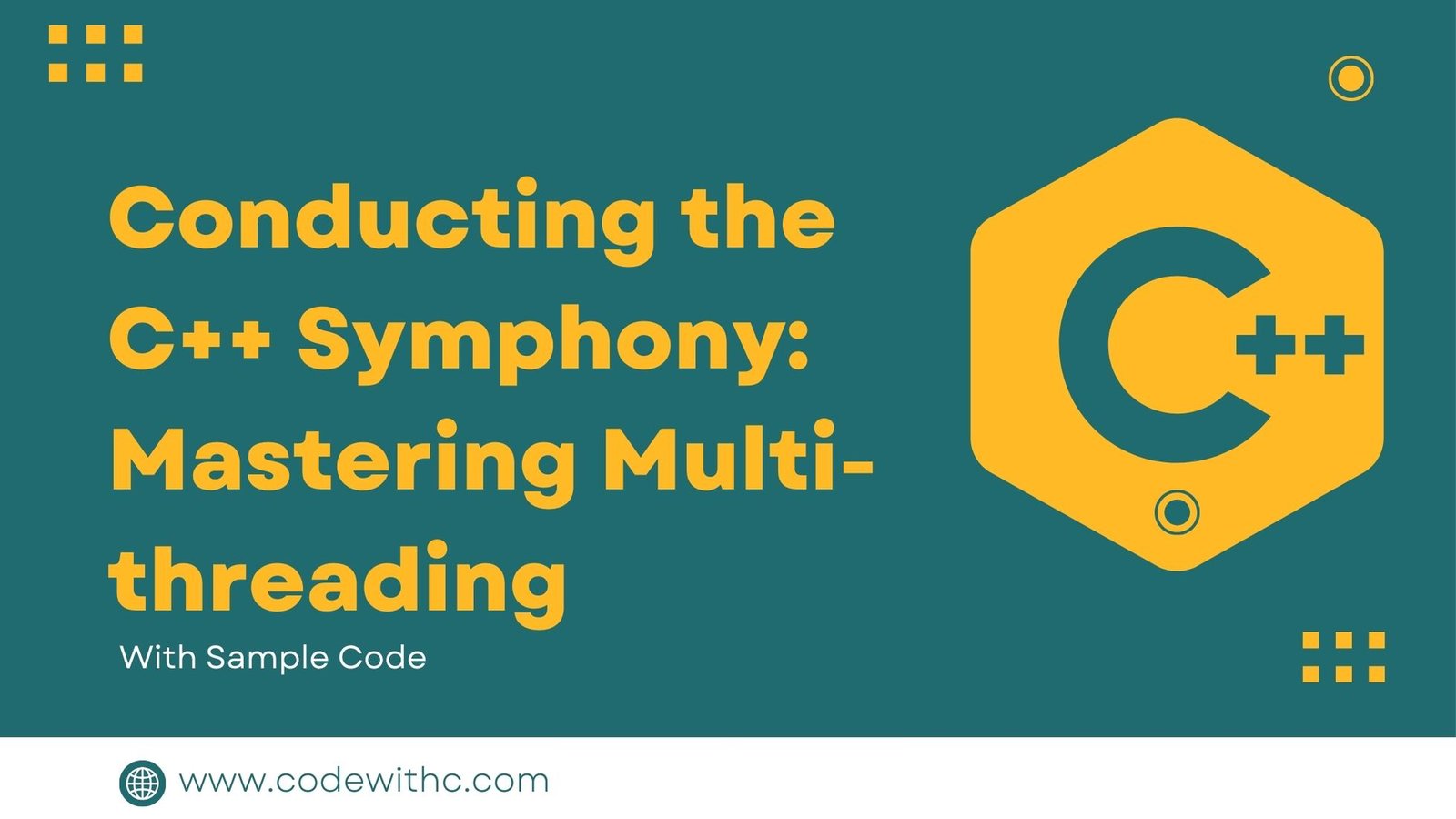Hey there, code virtuosos and symphony enthusiasts! ? Picture this: a grand concert hall brimming with energy, the air tingling with anticipation. As you step onto the podium, you’re not just a coder; you’re a maestro, a conductor of digital harmonies. In front of you sits an orchestra of threads—each poised, ready to play their part in your grand composition. Welcome to the exhilarating world of multi-threading in C++!
? The Symphony We’re Creating: In the realm of software development, multi-threading is like composing a symphony. Each thread is an instrumentalist, each function a musical piece, and you, my friend, are the maestro—wielding the baton of control structures and synchronization mechanisms. Intrigued? You should be!
? Why Multi-threading Matters: In today’s hyper-connected, data-driven world, efficiency is king. Single-threaded applications are like solo performances—they can be beautiful, but they can’t match the richness and complexity of a full orchestra. Multi-threading allows you to perform multiple tasks simultaneously, making your programs faster, more responsive, and, dare I say it, more harmonious.
? What You’ll Discover: We’ll delve into the intricacies of creating and managing threads, explore synchronization techniques, and even touch on some advanced topics like condition variables and thread pools. By the end of this grand concert, you’ll be equipped to conduct your own C++ symphonies, creating applications that are music to the ears—or, in this case, sheer poetry to the processor.
So, are you ready to raise your baton and lead your digital orchestra into a rhapsody of code? If so, scroll down, and let the symphony begin! ??
The Essence of Multi-threading: The Orchestra Pit
Multi-threading in C++ is akin to managing an orchestra. Each musician (thread) has a role, and it’s your job to ensure they all play in harmony.
The Basics: Single Thread vs Multi-thread
In a single-threaded application, you have just one musician—a lone violinist, perhaps. But with multi-threading, you have an entire orchestra at your disposal.
#include <iostream>
#include <thread>
using namespace std;
void function_1() {
cout << "Violin is playing.\n";
}
void function_2() {
cout << "Flute is playing.\n";
}
int main() {
thread t1(function_1);
thread t2(function_2);
t1.join();
t2.join();
return 0;
}
Code Explanation: Here, we’ve spawned two threads: one for the violin and another for the flute. We then wait for both threads to complete their performance.
Synchronization: The Conductor’s Baton
When multiple threads access shared resources, synchronization is key. It’s like a conductor ensuring no two instruments clash.
Mutex: The Sheet Music
Mutex is your sheet music, guiding each musician when to play and when to pause.
#include <mutex>
mutex mtx;
void function_3() {
mtx.lock();
// Critical section
mtx.unlock();
}
Code Explanation: The mutex mtx ensures that the critical section is accessed by only one thread at a time, maintaining harmony in our code orchestra.
Advanced Techniques: The Solos and Duets
Just like in a symphony, there are moments for solos and duets, where threads may have to perform complex tasks independently or in pairs.
Condition Variables: The Crescendos and Decrescendos
Condition variables allow threads to wait for a particular condition before proceeding, like the crescendos and decrescendos in a musical piece.
Alright, maestros, that’s our exploration of the grand symphony of multi-threading in C++. It’s a complex composition, but oh, the music you’ll make! And for the trivia buffs—did you know that multi-threading wasn’t part of the original C++ standard but was added later in C++11? It’s like adding a new instrument to an already fantastic orchestra!
In closing, multi-threading in C++ is your conductor’s baton, your tool for crafting grand symphonies of code. Until our next concert, keep those threads harmonized and your baton ever ready! ??
In Closing: The Final Crescendo and the Lasting Echoes
And so, we reach the final bars of our grand symphony on C++ multi-threading. What a journey it has been! From learning the basics of threading to orchestrating complex synchronization techniques, we’ve composed a masterpiece of digital harmony together. But remember, the final crescendo isn’t the end; it’s the birth of lasting echoes that will reverberate through your future compositions. ??
? The Symphony Lives On: Mastering multi-threading isn’t a one-time performance; it’s a lifelong skill. As you venture forth into new coding challenges, the techniques and patterns you’ve learned here will serve as your musical motifs, recurring themes that will bring continuity and elegance to your future works.
? Your Takeaways and the Score: You’ve not only learned the ‘notes’ (syntax and functions) but also the ‘music theory’ (concepts and best practices) behind multi-threading in C++. The score is in your hands, and the baton is yours to wield. Create new harmonies, explore unexpected modulations, and don’t shy away from the occasional dissonance. After all, great art often lives on the edge of chaos.
? A Standing Ovation: As a parting note, did you know that the C++ Standard Library’s threading capabilities are actually an abstraction over native threading implementations provided by the operating system? It’s like having a universal musical notation that every musician—or in this case, every processor—can understand!
Thank you, for being an incredible audience and an even better orchestra. Keep practicing, keep composing, and never lose the passion for the beautiful symphony that is coding. Until our next concert, let the music play on! ??







